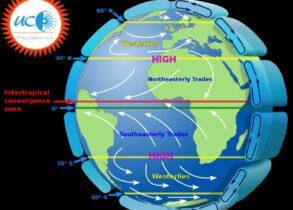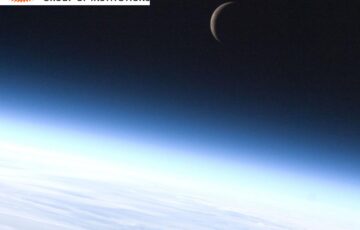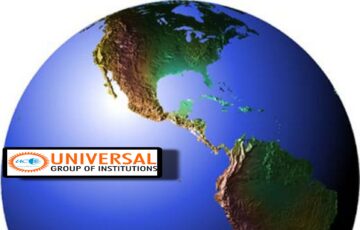With reference to the theory of plate tectonics, discuss the various types of plate tectonic boundaries around the world.
Approach
- Start your answer by briefly describing plate tectonic theory.
- Discuss various tectonic plates boundaries around the world.
- Conclude accordingly.
Introduction
A tectonic plate, also known as a lithospheric plate, is a substantial slab of solid rock with an uneven shape that is typically made up of both continental and oceanic lithosphere.
The lithosphere is made up of the crust and top mantle and ranges in thickness from 5 to 100 km in marine regions to 200 km in continental regions.
In 1967, the idea of tectonic plates was originally proposed.
Tectonic plates can be either continental or oceanic, depending on which one takes up the majority of the plate.
Body
The movement of the tectonic plates creates three types of tectonic boundaries:
Convergent, where plates move into one another.
Divergent, where plates move apart.
Transform, where plates move sideways in relation to each other.
Convergent Boundaries:
When tectonic plates collide with one another, a convergent plate boundary is created. They go by the name “destructive borders” as well.
These borders are frequently subduction zones, where a deep trench is formed as a heavier plate slides beneath a lighter plate.
In addition to creating subduction zones, convergent plate boundaries can cause mountain ranges and island arcs to form (Festoons).
The volcanoes create an island arc, which runs parallel to the trench, if both of the convergent plates are oceanic.
There are three ways in which convergence can occur:
Between an oceanic and continental plates.
Between two oceanic plates.
Between two continental plates.
Examples:
The Washington-Oregon coastline of the United States is an example of oceanic-continental convergent plate boundary.
Divergent Boundaries:
The breaking apart of tectonic plates creates a divergent border. The term “constructive boundaries” applies to them.
Rift valleys and seafloor spreading are found at divergent boundaries.
Magma from the Earth’s mantle rises nearer the surface at divergent oceanic plate borders and pushes one or more plates apart. Along the seam, mountains and volcanoes are rising. The vast basins are widened and the ocean floor is renewed during the process.
Examples:
The best-known example of divergent boundaries is the Mid-Atlantic Ridge where the American Plates are separated from the Eurasian and African Plates.
On land, giant troughs such as the Great Rift Valley in Africa form where plates are tugged apart.
Transform Boundaries:
Tectonic plates glide past one another horizontally to form a transform boundary, however some of these plates become stuck where they touch.
Because plate interaction doesn’t produce or remove crust, these bounds are conservative.
As a result, they don’t create beautiful geological features like mountains or oceans, but the halting motion frequently results in huge earthquakes, like the one that destroyed San Francisco in 1906.
Stress builds up in these points of contact, causing the rocks to crack or slip, jolting the plates forward unexpectedly and resulting in earthquakes.
These areas of breakage or slippage are called faults.
Examples:
The majority of Earth’s faults can be found along transform boundaries in the Ring of Fire.
The San Andreas Fault in California is an example of a transform boundary, where the Pacific Plate moves northward past the North American Plate.
Conclusion
The tectonic plates are not hard units that move in a definite manner over the Asthenosphere. Earthquakes and volcanic eruptions can occur when these plates contact, separate, or slide near to one another.








